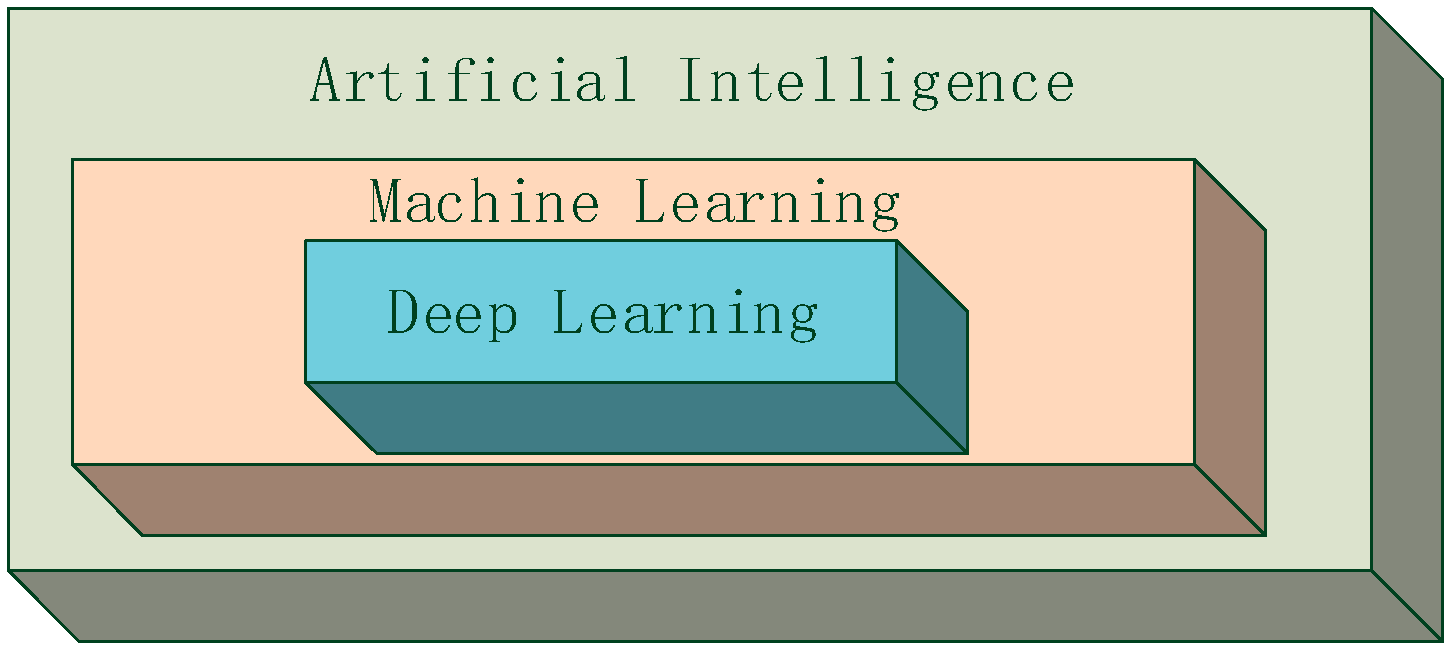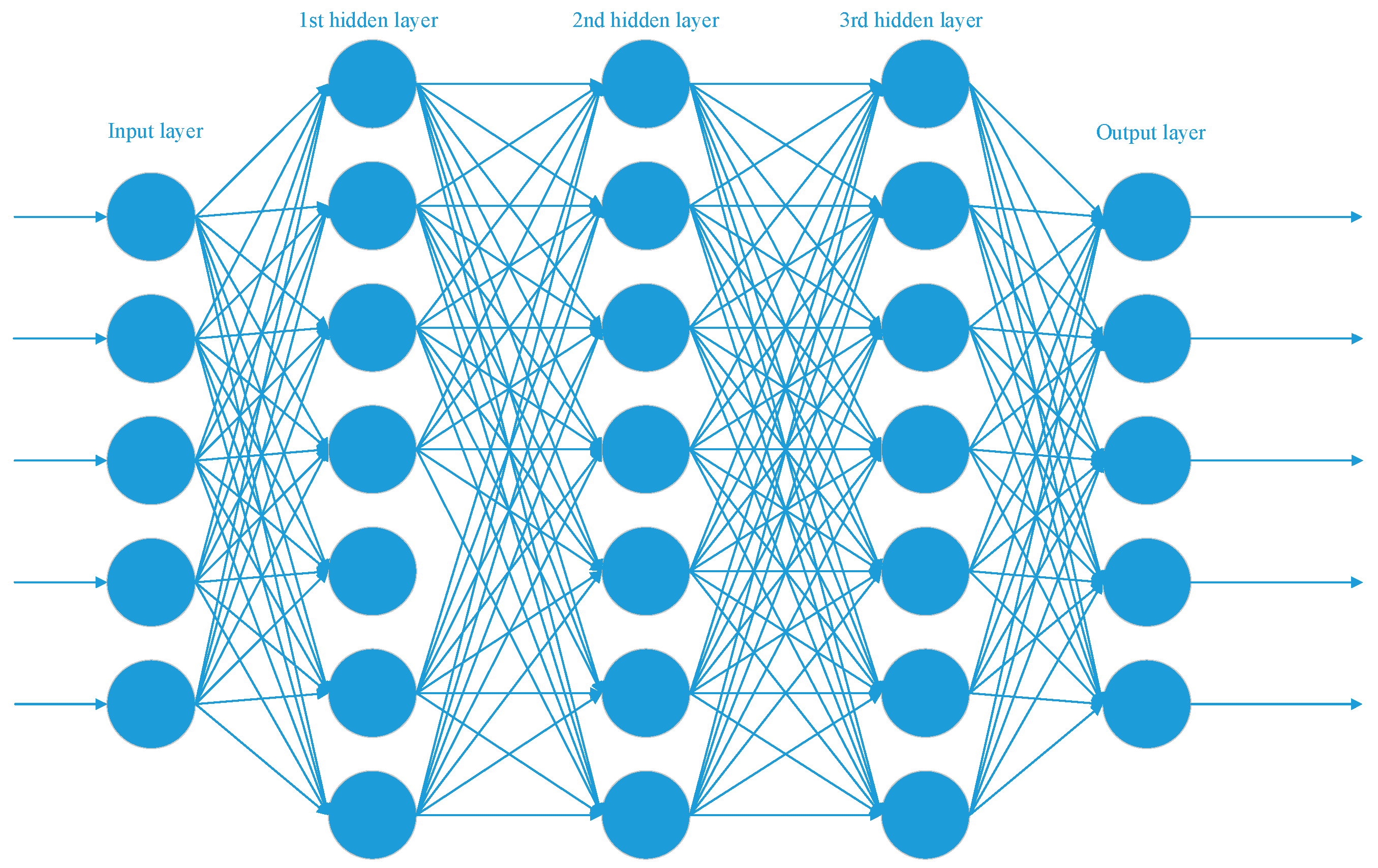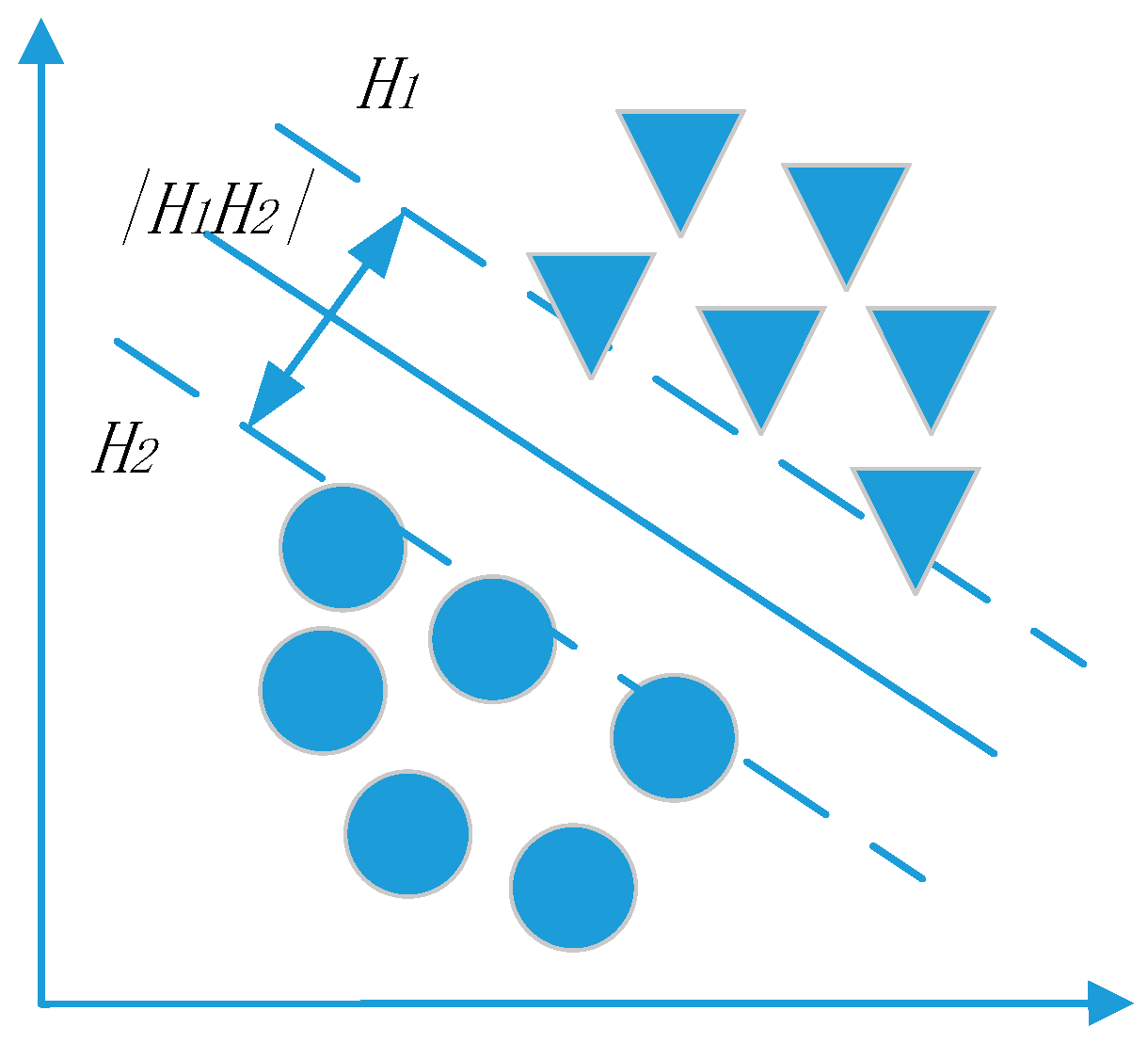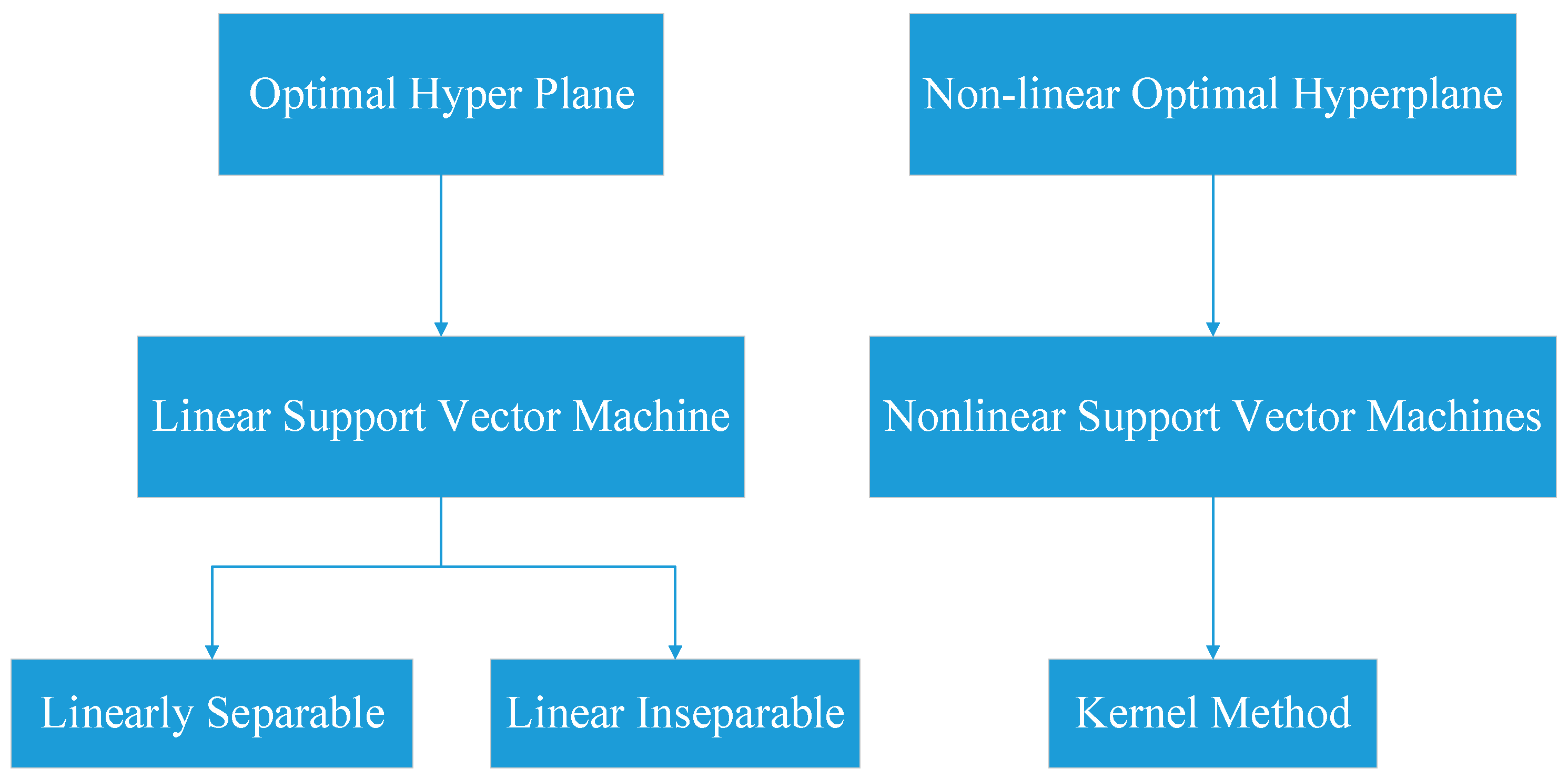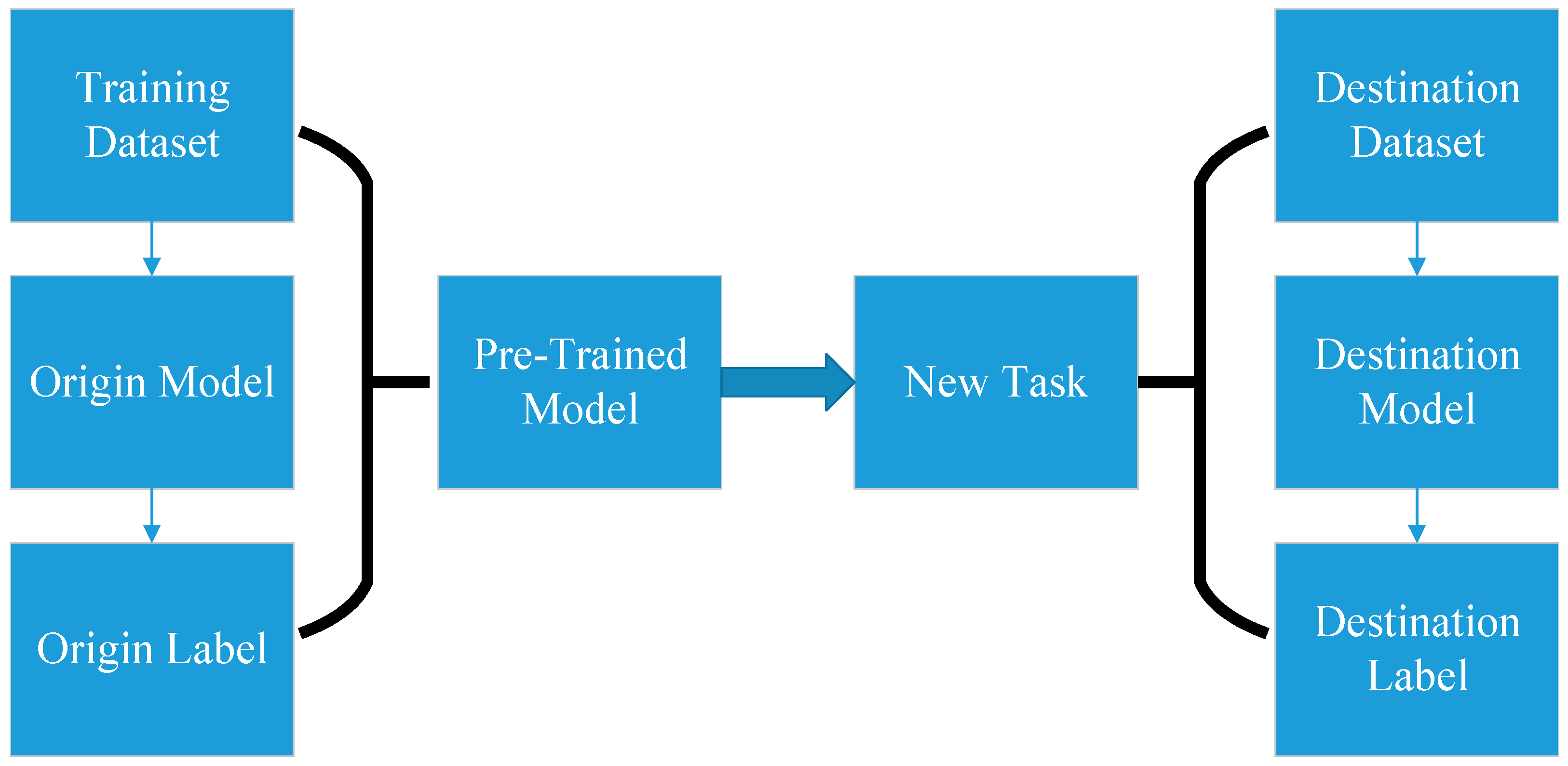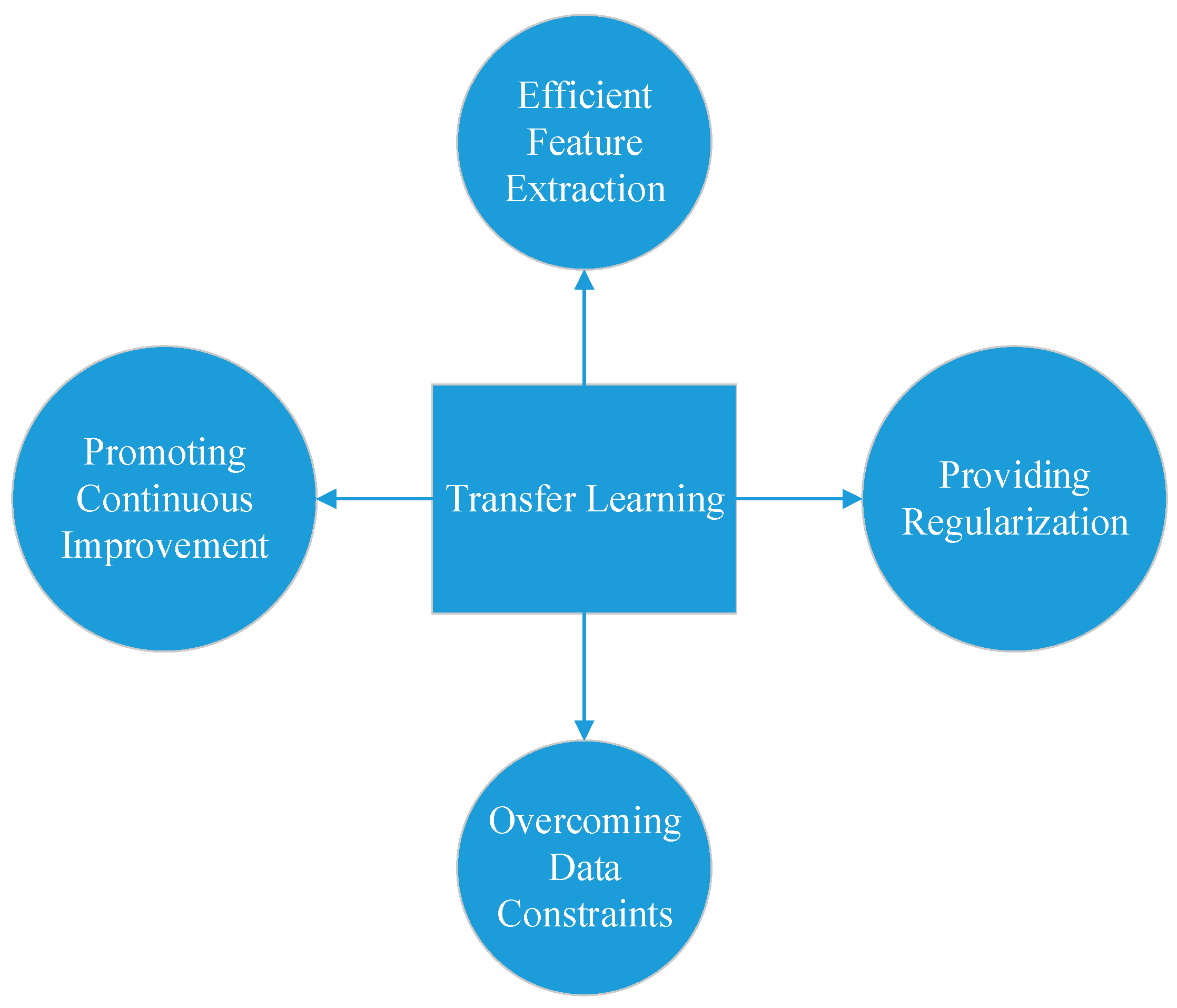1. Introduction
COVID-19, short for "Coronavirus Disease 2019," is a highly contagious respiratory illness caused by the novel coronavirus SARS-CoV-2 [
1]. It was first identified in Wuhan, China, in late 2019 and has since evolved into a global pandemic. COVID-19 primarily spreads through respiratory droplets and can lead to a wide range of symptoms [
2], from mild flu-like symptoms to severe respiratory distress and death, particularly in older adults and individuals with underlying health conditions. Efforts to control the spread of the virus have included vaccination campaigns, public health measures like mask-wearing and social distancing, and quarantine protocols to limit transmission.
According to clinical observations, most patients with COVID-19 infection have typical features such as loss or alteration of smell and taste [
3], fever, dry cough, and weakness of limbs. Some findings have shown that the novel coronavirus has an incubation period of 3-14 days [
4], even up to 24 days in some cases. During the incubation period of the virus, some cases have no typical clinical symptoms [
5]; after the incubation period of the virus has passed, most of the cases will show relevant typical symptoms, while a few have not yet appeared. From the above analysis, it can be seen that COVID-19 is highly infectious, highly pathogenic, and has a long incubation period [
6].
COVID-19 causes potentially serious consequences of respiratory distress, pneumonia, acute respiratory distress syndrome (ARDS), organ failure, and death. These consequences are more likely to be severe in the elderly and people with underlying health problems. The epidemic is not only a direct health hazard but also leads to serious social, economic [
3], and psychological consequences such as work stoppages, unemployment, disruption of education, and increased mental health problems. In addition, the COVID-19 virus causes long-term effects. It causes symptoms such as fatigue, brain fog, and respiratory problems to persist regardless of whether the patient's initial condition was mild or severe. The multifaceted global impact of COVID-19 highlights the importance of prevention, vaccination, and early diagnosis in mitigating these deleterious consequences.
Diagnosing COVID-19 is crucial for several reasons. This is because, firstly, diagnosis allows for the timely isolation [
7] and treatment of infected individuals, reducing the spread of the virus to others; secondly, public health authorities tracking the prevalence and trends of the disease need to rely on an accurate diagnosis, enabling them to make informed decisions when developing measures related to limiting the spread of the epidemic; and thirdly, the quality of patient care increases with an accurate diagnosis, especially in severe cases where early intervention can be life-saving. In addition, tracking the products of viral evolution, and thus their identification is essential for vaccine development and adaptation to ensure adequate preparedness against COVID-19. Finally, diagnosing COVID-19 can give individuals the information they need to help them prepare for community preparedness and personal protection.
In
Section 2, we will introduce the basic concepts of artificial intelligence, machine learning, deep learning, and some related applications in some research areas. In
Section 3, we will summarize some machine learning-based methods for diagnosing COVID-19 and analyze their advantages. Then, in
Section 4, some deep learning methods for diagnosing COVID-19 are introduced into the narrative and we similarly analyze their merits. We outline the basic concepts of transfer learning in
Section 5 and discuss how it can help with COVID-19 diagnosis. In
Section 6, we propose solutions to the reality that evolving COVID-19 strains can make models trained on previous datasets unable to accurately determine other existing problems. Finally,
Section 7 presents the conclusions we draw and suggestions for the development of future research directions.
2. Artificial Intelligence, Machine Learning, Deep Learning
In recent years, machine learning and deep learning have pioneered a new phase for disease detection and diagnosis using images [
8]. As shown in
Figure 1, machine learning (ML) is a subset of artificial intelligence (AI) that involves the development of algorithms and models that enable computers to learn from and make predictions [
9] or decisions based on data. Instead of being explicitly programmed to perform specific tasks, ML systems use data to identify patterns, make inferences, and improve their performance over time [
10]. This technology is widely used in various applications, from natural language processing and image recognition to recommendation systems [
11] and autonomous vehicles [
12]. It plays a pivotal role in automating complex tasks, extracting insights from large datasets, and enhancing decision-making processes across many industries. Nowadays, machine learning techniques generally include zero-shot learning, active learning, contrastive learning, self-supervised learning, life-long learning, semi-supervised learning, ensemble learning, sequential learning, and multi-view learning used in computer vision [
13]. Machine learning also includes reinforcement learning. Reinforcement learning is the creation of an intelligence that effectively interprets perceptions of the environment and then takes relevant actions or decisions based on the perceptions [
14]. Reinforcement learning differs from supervised and unsupervised learning in that it is not told what actions to take, but must discover on its own, by trial and error, which actions will yield the most lucrative benefits. Intelligentsia continuously learn and explore through self-reward.
Cosgriff and Celi [
15] pointed out that deep learning-based methods performed better in the postoperative mortality predictive modeling task. They also noted that deep learning (DL) applies connectionist principles to predictive modeling tasks, thus centering on the development and application of artificial neural networks (ANNs). DL is a subfield of machine learning that focuses on ANNs, particularly deep neural networks (DNN) with multiple layers (hence the term "deep"). It aims to mimic the human brain's structure and function by using interconnected layers of artificial neurons to process and learn from data. Neural networks are based on the extension of perceptual machines, while DNNs can be understood as neural networks with many hidden layers (
Figure 2). Multilayer neural network and DNN are the same kind of network and DNN is also known as multilayer perceptual machine (MLP).
Deep learning is a subset of machine learning because it shares the fundamental concept of using data to improve a system's performance. However, it distinguishes itself by its use of deep neural networks, which can automatically discover and represent complex patterns in data, making it particularly effective for tasks like image recognition [
16], natural language understanding [
16], and speech recognition. As shown in
Figure 2, DNN consists of an input layer, a superimposed hidden layer, and an output layer. Each hidden layer consists of hidden units. Each unit in the layer represents a weighted linear combination of the units in the previous layer, which are usually obtained after a nonlinear transformation [
15]. Each hidden layer has weights that represent the strength of the connections between the units. Deep learning has played a pivotal role in advancing the capabilities of machine learning in recent years and has been instrumental in numerous breakthroughs in AI research and applications.
3. Machine Learning for COVID-19
Scholars and researchers have employed machine learning techniques in various ways to aid in the diagnosis and management of COVID-19 [
17]. One prominent application is the development of predictive models that use medical data, such as clinical symptoms [
18,
19], laboratory test results, and medical imaging, to identify and classify COVID-19 cases. Machine learning algorithms, including decision trees, support vector machines (SVM) [
20], and deep learning neural networks, can analyze this data to distinguish between COVID-19 and other respiratory illnesses with high accuracy. Such SVM is a popular traditional classifier with high performance [
21].
The basic principle of SVM is a method based on statistical learning theory applied to binary classification problems. As shown in
Figure 3, the SVM algorithm aims to find the optimal hyperplane
to correctly separate the two types of data and maximize the classification interval
, where
and
are the intervals of the closest samples in each type of class that are parallel to the optimal hyperplane (decision boundary), respectively.
SVM has better performance in solving practical problems such as small samples, nonlinear and high dimensional data, and local minima. For hyperplanes, as shown in
Figure 4, SVM has linear hyperplanes and nonlinear hyperplanes. Moreover, for the former, there are two cases of linearly divisible and linearly indivisible; for the latter, there is only one case of linearly indivisible.
There exists a process of ascending linearization for SVMs. The process is based on the Mercer kernel expansion theorem, which maps the input space to the Hilbert space through a nonlinear transformation defined in terms of the inner product function, and searches for the relationship between the input variables and the output variables in this high-dimensional feature space. Chen [
21] noted that standard linear SVM shows a good classification performance on a small dataset. These models help in early and accurate diagnosis, allowing for timely treatment and isolation of infected individuals, which is crucial in controlling the spread of the virus.
Another valuable use of machine learning in COVID-19 diagnosis is in medical imaging analysis, particularly in the interpretation of chest X-rays [
22] and CT scans [
22]. In the field of deep learning, radiologic examination using chest X-ray images is the effective screening method for COVID-19 case detection [
23]; and chest computed tomography imaging is more conducive [
24] to COVID-19 screening than RT-PCR testing [
25]. Convolutional neural networks (CNNs), which are deep learning algorithms, are one of the hottest research areas in computer-aided diagnostic tasks [
26]. Baghdadi, et al. [
27] stated that CNNs play an important role in digital image processing and help in the development of medical systems. Such CNNs can be trained to detect characteristic patterns and features associated with COVID-19 lung abnormalities. This technology aids radiologists in quickly identifying potential cases and assessing disease severity, enabling more efficient and accurate diagnosis.
Furthermore, machine learning has been instrumental in the development of diagnostic tools based on non-invasive or less invasive data sources, such as voice, breath sounds [
28] and cough analysis [
29]. Researchers have used machine learning algorithms to analyze audio recordings of coughs and speech to detect subtle changes that may indicate COVID-19 infection. These tools offer a potential means for rapid and widespread screening, especially in resource-constrained settings. Overall, machine learning has been a valuable tool in enhancing the accuracy and efficiency of COVID-19 diagnosis across different domains of medical data analysis.
4. Deep Learning for COVID-19 Diagnosis
Scholars and researchers have leveraged deep learning techniques in several ways for COVID-19 diagnosis, offering a powerful tool for accurate and efficient identification of cases. One of the primary applications is in medical imaging [
30], specifically chest X-ray [
31] and CT scan analysis [
32]. Deep learning models, particularly convolutional neural networks (CNNs), can automatically extract intricate patterns and features from these images, aiding in the detection of COVID-19-related lung abnormalities. Subramaniam, et al. [
33] stated that Convolutional Neural Networks (CNNs) belong to the deep learning methods with good performance or are greatly favored in artificial intelligence methods for COVID-19 case diagnosis. By training these models on large datasets of radiological images, scholars have developed AI systems capable of identifying subtle lung changes indicative of COVID-19, assisting radiologists in diagnosis and assessment of disease severity. Subramaniam, et al. [
33] also indicated that the generalization ability of these models can be enhanced by using techniques such as migration learning, cross-validation, and data augmentation.
Another key application is in the analysis of clinical data, including patient electronic health records (EHRs). Deep learning models can process diverse patient information, such as clinical symptoms, laboratory test results, and demographics, to predict the likelihood of COVID-19 infection. These models use recurrent neural networks (RNNs) and transformers to capture temporal and contextual information, improving diagnostic accuracy and helping healthcare providers make informed decisions about testing and treatment. RNNs are used in data analysis tasks because RNNs are the better-performing type of artificial neural networks. RNNs predict future data for a specified duration based on existing time series data [
34]. RNNs have a promising future. Because their internal memory remembers the important features of the input sequential data, it produces an accurate prediction of the future [
34].
Deep learning has also been instrumental in the development of diagnostic tools based on non-imaging data, such as voice and cough analysis [
29]. Scholars have used deep learning algorithms to analyze audio recordings of coughs, speech, and even smartphone-recorded respiratory sounds [
35] to identify distinct acoustic patterns associated with COVID-19 infection. These tools offer a non-invasive and potentially widespread means of screening for the virus, particularly in situations where traditional testing methods are limited. The implementation process of using deep learning to accomplish the above tasks can be summarized as data collection and preprocessing, deep feature extraction, pattern recognition, model training and optimization, and application. This process can also be described in detail as follows: first, a large amount of labeled audio data, including coughs, speech samples, and breath sounds, need to be collected. These data should be divided into three parts: training set, validation set, and test set. For speech and cough audio, preprocessing, such as noise removal and normalization, is needed to improve the recognition accuracy of the model; then, feature extraction is performed using deep learning models (e.g., CNN; RNN; or Transformer, etc.). These models can automatically learn features in the audio, such as the frequency of the cough, the pitch of the voice, the intensity of the sound, etc.; furthermore, the extracted features can be further used for pattern recognition (e.g., by using a deep learning model, it is possible to determine whether a piece of coughing audio displays a pattern specific to COVID-19 infection. This process can be regarded as a sound classification task); after that, the model is trained by using a large amount of labeled data, and a validation set is used to tune the parameters and select the best model. Once the model performs well on the validation set, a test set can be used to evaluate the generalization ability of the model; finally, the trained model can be used to analyze audio data in real-time to detect possible COVID-19 infections. For example, it can be integrated into a mobile app or online tool where the user uploads audio and the model returns a risk assessment for COVID-19 infection.
Additionally, deep learning has found applications in the development of predictive models [
36,
37,
38] that forecast COVID-19 trends and outbreaks. These models analyze a range of data sources, including epidemiological data, population mobility, and social interactions, to predict the spread of the virus. They can help public health authorities make data-driven decisions regarding resource allocation, vaccination campaigns, and the implementation of preventive measures. In summary, deep learning has been a valuable asset in the fight against COVID-19 by enhancing diagnostic accuracy, enabling non-invasive screening methods, and aiding in predictive modeling for effective pandemic management.
5. Transfer Learning for COVID-19 Diagnosis
Transfer learning is very effective in the COVID-19 diagnostic domain, mainly because it retains and applies knowledge from one or more tasks, domains, or distributions to develop valid hypotheses for new hypotheses [
39]. As shown in
Figure 5, this reason can also be explained by the ability of transfer learning to utilize pre-trained models and adapt them to new tasks [
40].
Transfer learning allows the use of deep neural networks pre-trained on vast datasets for tasks like image analysis, which is essential in COVID-19 diagnosis, especially in radiology. Models like Convolutional Neural Networks (CNNs) pre-trained on diverse image datasets can be fine-tuned on X-ray or CT scan images of COVID-19 patients [
41]. By doing so, these models can efficiently extract relevant features from medical images, such as lung opacities and ground-glass opacities, which are characteristic signs of COVID-19 pneumonia. This significantly reduces the need for manually engineered features and speeds up the development of diagnostic tools.
One of the significant challenges in COVID-19 diagnosis is the limited availability of labeled data [
8], especially in the early stages of the pandemic. Transfer learning allows for the transfer of knowledge learned from larger, more diverse datasets to the task of COVID-19 detection. This transfer of knowledge enables models to generalize better even with limited COVID-19-specific data, leading to more robust and accurate diagnostic systems. Researchers can thus overcome data scarcity issues, which is crucial for timely and accurate diagnosis.
Transfer learning techniques offer built-in mechanisms for regularization [
42] and adaptation [
42]. Pre-trained models have already learned general features from extensive datasets, which makes them less prone to overfitting on smaller medical datasets. By fine-tuning these models on COVID-19 data, they can adapt their learned representations to the specific characteristics of COVID-19 cases, such as subtle radiological patterns and variations in patient demographics. This ensures that diagnostic models are more robust and reliable when applied to real-world medical data.
As the understanding of COVID-19 evolves and more data becomes available, transfer learning allows for continuous model improvement. Models can be updated and fine-tuned with the latest data, ensuring that they remain up-to-date with the changing landscape of the pandemic. This adaptability is crucial for the long-term effectiveness of COVID-19 diagnostic tools, as it allows them to better capture emerging trends, new variants, and evolving clinical practices.
In conclusion, as shown in
Figure 6, transfer learning plays a pivotal role in COVID-19 diagnosis by enabling efficient feature extraction, overcoming data limitations [
43], providing regularization, and facilitating continuous improvement.
By leveraging pre-trained models, the medical community can develop more accurate and adaptable diagnostic tools, ultimately aiding in the early detection and management of COVID-19 cases. This not only assists healthcare professionals in providing timely care but also contributes to the overall effort to control the spread of the virus.
6. Challenges
Although AI tools like machine learning and deep learning can make quick decisions for the diagnosis of the infection of COVID-19 using medical images [
44], using machine learning and deep learning in COVID-19 diagnosis presents several challenges. Firstly, obtaining high-quality labeled data for training these models can be difficult [
45]. Building robust datasets that include diverse patient populations, different disease stages, and reliable ground truth labels can be time-consuming and resource-intensive. Additionally, data quality and consistency across healthcare institutions can vary, leading to potential biases in the models. Further, the raw data of the dataset provided by the healthcare organization can easily lead the machine learning algorithms to make wrong judgments with a high probability when perturbations imperceptible to the human eye are added [
11].
Secondly, there is a challenge related to model interpretability. Deep learning models, particularly neural networks with numerous layers, are often considered "black boxes" [
46] because it can be challenging to understand how they arrive at their decisions. Another reason why it is called a "black box" is that deep neural networks have the disadvantage that the internal logic to achieve the desired output or result is not understandable and explainable [
47]. Panwar, et al. [
48] used VGG-19 as a transfer learning model and Gradient Weighted Class Activation Mapping (Grad-CAM) for interpretable deep learning. Grad-CAM will be applied to any of the convolutional layers of VGG-19 after the model has predicted the label.
In the context of COVID-19 diagnosis, where medical professionals need to trust and interpret the model's results, this lack of transparency can be a significant hurdle. The problem of interpreting the very difficult output of current deep learning models is compounded by the lack of reliable measures of uncertainty [
49]. Interpretability is key to medical diagnosis, and understanding the reasons for decisions is viewed as important as the need for decisions [
50]. Interpretable machine learning and deep learning techniques are actively being researched to address this issue [
51,
52,
53], but they remain a challenge in many applications.
Moreover, the rapid evolution of the virus and the emergence of new variants pose a challenge in maintaining the accuracy and generalizability of machine learning and deep learning models. For example, SARS-CoV-2 is a virus that causes COVID-19, which is characterized by rapid transmission, constant change, and a higher probability of fatality [
54]. These models are trained on historical data and may not perform as well when faced with novel variations of the virus [
55]. Continuous model retraining and adaptation to evolving data are necessary to ensure their effectiveness in diagnosing new strains of COVID-19. Finally, the deployment of AI-driven diagnostic tools in clinical practice requires rigorous validation, regulatory approval, and adherence to ethical and privacy [
56] considerations, adding another layer of complexity to their integration into healthcare systems.
7. Conclusion and Future Directions
Deep learning has proven invaluable in COVID-19 diagnosis, particularly in medical imaging analysis and clinical data interpretation. Convolutional neural networks (CNNs) enable the automatic detection of lung abnormalities on chest X-rays and CT scans, aiding radiologists in identifying COVID-19 cases. Recurrent neural networks (RNNs) and transformers process clinical data to predict infection likelihood. Voice and cough analysis using deep learning offer non-invasive screening methods.
Future research directions in this field include enhancing model interpretability to build trust with healthcare professionals, addressing data quality and diversity issues, adapting models to evolving virus strains, and navigating the regulatory and ethical considerations necessary for deploying deep learning-based diagnostic tools in clinical practice.
Funding
This research did not receive any grants.
Acknowledgments
We thank all the anonymous reviewers for their hard reviewing work.
References
- H. Jin et al., "Anti-SARS-CoV-2 monoclonal antibodies for the treatment of mild-to-moderate COVID-19 in multiple sclerosis: A retrospective cohort study," Multiple Sclerosis and Related Disorders, vol. 79, p. 104943, 2023/11/01/ 2023.
- Wang, S.-H.; Fernandes, S.L.; Zhu, Z.; Zhang, Y.-D. AVNC: Attention-Based VGG-Style Network for COVID-19 Diagnosis by CBAM. IEEE Sensors J. 2021, 22, 17431–17438. [Google Scholar] [CrossRef] [PubMed]
- Zhang, Y.-D.; Govindaraj, V.; Zhu, Z. FECNet: a Neural Network and a Mobile App for COVID-19 Recognition. Mob. Networks Appl. 2023, 1–14. [Google Scholar] [CrossRef]
- K. Kagami, M. Kitajima, H. Takahashi, T. Teshima, and N. Ishiguro, "Association of wastewater SARS-CoV-2 load with confirmed COVID-19 cases at a university hospital in Sapporo, Japan during the period from February 2021 to February 2023. Sci. Total Environ. 2023, 899, 165457.
- Wang, S.-H.; Wu, X.; Zhang, Y.-D.; Tang, C.; Zhang, X. Diagnosis of COVID-19 by Wavelet Renyi Entropy and Three-Segment Biogeography-Based Optimization. Int. J. Comput. Intell. Syst. 2020, 13, 1332–1344. [Google Scholar] [CrossRef]
- Pi, P.; Lima, D. Gray level co-occurrence matrix and extreme learning machine for Covid-19 diagnosis. Int. J. Cogn. Comput. Eng. 2021, 2, 93–103. [Google Scholar] [CrossRef]
- dos Santos, E.R.R.; de Paula, J.L.S.; Tardieux, F.M.; Costa-E-Silva, V.N.; Lal, A.; Leite, A.F.B. Association between COVID-19 and anxiety during social isolation: A systematic review. World J. Clin. Cases 2021, 9, 7433–7444. [Google Scholar] [CrossRef]
- Chandy, D.A.; Babu, C.; O, R.M. Deep Learning Based COVID-19 Detection Using Medical Images: Is Insufficient Data Handled Well? . Curr. Med Imaging Former. Curr. Med Imaging Rev. 2023, 19, 307–311. [Google Scholar] [CrossRef]
- T. Wuest, D. Weimer, C. Irgens, and K.-D. Thoben, "Machine learning in manufacturing: advantages, challenges, and applications,". Production & Manufacturing Research 2016, 4, 23–44.
- Q. An, S. Rahman, J. W. Zhou, and J. J. Kang, "A Comprehensive Review on Machine Learning in Healthcare Industry: Classification, Restrictions, Opportunities and Challenges,". SENSORS 2023, 23, 4178. [CrossRef]
- Guo, S.; Li, X.; Mu, Z. Adversarial Machine Learning on Social Network: A Survey. Front. Phys. 2021, 9. [Google Scholar] [CrossRef]
- Zhu, B.; Han, J.; Zhao, J.; Wang, H. Combined Hierarchical Learning Framework for Personalized Automatic Lane-Changing. IEEE Trans. Intell. Transp. Syst. 2020, 22, 6275–6285. [Google Scholar] [CrossRef]
- Mahadevkar, S.V.; Khemani, B.; Patil, S.; Kotecha, K.; Vora, D.R.; Abraham, A.; Gabralla, L.A. A Review on Machine Learning Styles in Computer Vision—Techniques and Future Directions. IEEE Access 2022, 10, 107293–107329. [Google Scholar] [CrossRef]
- Z. Ren, S. Wang, and Y. Zhang, "Weakly supervised machine learning,". CAAI Transactions on Intelligence Technology 2023, 8, 549–580. [CrossRef]
- Cosgriff, C.V.; Celi, L.A. Deep learning for risk assessment: all about automatic feature extraction. Br. J. Anaesth. 2020, 124, 131–133. [Google Scholar] [CrossRef] [PubMed]
- Shrestha, A.; Mahmood, A. Review of Deep Learning Algorithms and Architectures. IEEE Access 2019, 7, 53040–53065. [Google Scholar] [CrossRef]
- Zhang, Y.-D.; Zhang, Z.; Zhang, X.; Wang, S.-H. MIDCAN: A multiple input deep convolutional attention network for Covid-19 diagnosis based on chest CT and chest X-ray. Pattern Recognit. Lett. 2021, 150, 8–16. [Google Scholar] [CrossRef] [PubMed]
- Salokhiddinov, M.; Nuriddinov, R. Clinical evaluation of neuropsychiatric symptoms in patients with Parkinson’s disease during COVID-19 pandemic: risk factors. Park. Relat. Disord. 2023, 113. [Google Scholar] [CrossRef]
- Navarro-López, V.; Hernández-Belmonte, A.; Soto, M.I.P.; Ayo-González, M.; Losa-Rodríguez, G.; Ros-Sánchez, E.; Martínez-Gabarrón, M.; Sánchez-Pellicer, P.; Aguera-Santos, J.; Núñez-Delegido, E.; et al. Oral intake of Kluyveromyces marxianus B0399 plus Lactobacillus rhamnosus CECT 30579 to mitigate symptoms in COVID-19 patients: A randomized open label clinical trial. Med. Microecol. 2022, 14, 100061–100061. [Google Scholar] [CrossRef]
- Wang, S.; Li, Y.; Shao, Y.; Cattani, C.; Zhang, Y.; Du, S. Detection of Dendritic Spines Using Wavelet Packet Entropy and Fuzzy Support Vector Machine. CNS Neurol. Disord. - Drug Targets 2017, 16, 116–121. [Google Scholar] [CrossRef]
- Y. Chen, "Covid-19 Classification Based on Gray-Level Co-occurrence Matrix and Support Vector Machine," in COVID-19: Prediction, Decision-Making, and its Impacts, K. C. Santosh and A. Joshi, Eds. Singapore: Springer Singapore, 2021, pp. 47-55.
- Y. Zhang, "Fighting against COVID-19: Innovations and applications,". International Journal of Imaging Systems and Technology 2023, 33, 1111–1115. [CrossRef]
- Tang, S.; Wang, C.; Nie, J.; Kumar, N.; Zhang, Y.; Xiong, Z.; Barnawi, A. EDL-COVID: Ensemble Deep Learning for COVID-19 Case Detection From Chest X-Ray Images. IEEE Trans. Ind. Informatics 2021, 17, 6539–6549. [Google Scholar] [CrossRef]
- P. Meyer, D. Muller, I. Soto-Rey, and F. Kramer, "COVID-19 Image Segmentation Based on Deep Learning and Ensemble Learning,". Studies in health technology and informatics, Journal Article 2021, 281, 518–519.
- Bollineni, V.R.; Nieboer, K.H.; Döring, S.; Buls, N.; de Mey, J. The role of CT imaging for management of COVID-19 in epidemic area: early experience from a University Hospital. Insights into Imaging 2021, 12, 1–5. [Google Scholar] [CrossRef] [PubMed]
- Wang, W.; Pei, Y.; Wang, S.-H.; Gorrz, J.M.; Zhang, Y.-D. PSTCNN: Explainable COVID-19 diagnosis using PSO-guided self-tuning CNN. BIOCELL 2023, 47, 373–384. [Google Scholar] [CrossRef] [PubMed]
- Baghdadi, N.A.; Malki, A.; Abdelaliem, S.F.; Balaha, H.M.; Badawy, M.; Elhosseini, M. An automated diagnosis and classification of COVID-19 from chest CT images using a transfer learning-based convolutional neural network. Comput. Biol. Med. 2022, 144, 105383–105383. [Google Scholar] [CrossRef]
- Sfayyih, A.H.; Sulaiman, N.; Sabry, A.H. A review on lung disease recognition by acoustic signal analysis with deep learning networks. J. Big Data 2023, 10, 1–23. [Google Scholar] [CrossRef]
- Verde, L.; De Pietro, G.; Sannino, G. Artificial Intelligence Techniques for the Non-invasive Detection of COVID-19 Through the Analysis of Voice Signals. Arab. J. Sci. Eng. 2021, 48, 11143–11153. [Google Scholar] [CrossRef]
- S.-H. Wang, K. M. Attique, and G. Vishnuvarthanan, "Deep rank-based average pooling network for COVID-19 recognition,". Computers, Materials, & Continua 2022, 70, 2797–2813.
- Mezina, A.; Burget, R. Detection of post-COVID-19-related pulmonary diseases in X-ray images using Vision Transformer-based neural network. Biomed. Signal Process. Control. 2024, 87. [Google Scholar] [CrossRef]
- S. I. J. van Bakel et al., "CT Scan-Derived Muscle, But Not Fat, Area Independently Predicts Mortality in COVID-19," CHEST, vol. 164, no. 2, pp. 314-322, 2023/08/01/ 2023.
- Subramaniam, K.; Palanisamy, N.; Sinnaswamy, R.A.; Muthusamy, S.; Mishra, O.P.; Loganathan, A.K.; Ramamoorthi, P.; Gnanakkan, C.A.R.C.; Thangavel, G.; Sundararajan, S.C.M. A comprehensive review of analyzing the chest X-ray images to detect COVID-19 infections using deep learning techniques. Soft Comput. 2023, 27, 1–22. [Google Scholar] [CrossRef]
- ArunKumar, K.; Kalaga, D.V.; Kumar, C.M.S.; Kawaji, M.; Brenza, T.M. Forecasting of COVID-19 using deep layer Recurrent Neural Networks (RNNs) with Gated Recurrent Units (GRUs) and Long Short-Term Memory (LSTM) cells. Chaos, Solitons Fractals 2021, 146, 110861. [Google Scholar] [CrossRef] [PubMed]
- Liu, S.; Mallol-Ragolta, A.; Schuller, B.W. COVID-19 Detection with a Novel Multi-Type Deep Fusion Method using Breathing and Coughing Information. 2021 43rd Annual International Conference of the IEEE Engineering in Medicine & Biology Society (EMBC). LOCATION OF CONFERENCE, MexicoDATE OF CONFERENCE; pp. 1840–1843.
- Abedin, M.Z.; Moon, M.H.; Hassan, M.K.; Hajek, P. Deep learning-based exchange rate prediction during the COVID-19 pandemic. Ann. Oper. Res. 2021, 1–52. [Google Scholar] [CrossRef]
- Kumar, R.L.; Khan, F.; Din, S.; Band, S.S.; Mosavi, A.; Ibeke, E. Recurrent Neural Network and Reinforcement Learning Model for COVID-19 Prediction. Front. Public Heal. 2021, 9, 744100. [Google Scholar] [CrossRef] [PubMed]
- Liao, Z.; Lan, P.; Fan, X.; Kelly, B.; Innes, A.; Liao, Z. SIRVD-DL: A COVID-19 deep learning prediction model based on time-dependent SIRVD. Comput. Biol. Med. 2021, 138, 104868–104868. [Google Scholar] [CrossRef] [PubMed]
- Venkateswara, H.; Chakraborty, S.; Panchanathan, S. Deep-Learning Systems for Domain Adaptation in Computer Vision: Learning Transferable Feature Representations. IEEE Signal Process. Mag. 2017, 34, 117–129. [Google Scholar] [CrossRef]
- Yang, L.; Wang, S.-H.; Zhang, Y.-D. EDNC: Ensemble Deep Neural Network for COVID-19 Recognition. Tomography 2022, 8, 869–890. [Google Scholar] [CrossRef]
- Y. Kaya and E. Gursoy, "A MobileNet-based CNN model with a novel fine-tuning mechanism for COVID-19 infection detection,". SOFT COMPUTING 2023, 27, 5521–5535. [CrossRef]
- Gardner, P.; Liu, X.; Worden, K. On the application of domain adaptation in structural health monitoring. Mech. Syst. Signal Process. 2020, 138, 106550. [Google Scholar] [CrossRef]
- Aldayel, M.S.; Ykhlef, M.; Al-Nafjan, A.N. Electroencephalogram-Based Preference Prediction Using Deep Transfer Learning. IEEE Access 2020, 8, 176818–176829. [Google Scholar] [CrossRef]
- C. C. John, V. C. C. John, V. Ponnusamy, S. K. Chandrasekaran, and R. Nandakumar, "A Survey on Mathematical, Machine Learning and Deep Learning Models for COVID-19 Transmission and Diagnosis," IEEE REVIEWS IN BIOMEDICAL ENGINEERING, vol. 15, pp. 325-340, 2022.
- Chen, J.; See, K.C. Artificial Intelligence for COVID-19: Rapid Review. J. Med Internet Res. 2020, 22, e21476. [Google Scholar] [CrossRef]
- X. Guo, Y. D. X. Guo, Y. D. Zhang, S. Y. Lu, and Z. H. Lu, "A Survey on Machine Learning in COVID-19 Diagnosis," CMES-COMPUTER MODELING IN ENGINEERING & SCIENCES, vol. 130, no. 1, pp. 23-71, 2022.
- J. Z. Hussain, "Deep Learning Black Box Problem," Dissertation/Thesis 2019 2019.
- Panwar, H.; Gupta, P.; Siddiqui, M.K.; Morales-Menendez, R.; Bhardwaj, P.; Singh, V. A deep learning and grad-CAM based color visualization approach for fast detection of COVID-19 cases using chest X-ray and CT-Scan images. Chaos, Solitons Fractals 2020, 140, 110190. [Google Scholar] [CrossRef] [PubMed]
- Shorten, C.; Khoshgoftaar, T.M.; Furht, B. Deep Learning applications for COVID-19. J. Big Data 2021, 8, 1–54. [Google Scholar] [CrossRef] [PubMed]
- Goel, K.; Sindhgatta, R.; Kalra, S.; Goel, R.; Mutreja, P. The effect of machine learning explanations on user trust for automated diagnosis of COVID-19. Comput. Biol. Med. 2022, 146, 105587–105587. [Google Scholar] [CrossRef] [PubMed]
- Zhang, X.; Han, L.; Sobeih, T.; Han, L.; Dempsey, N.; Lechareas, S.; Tridente, A.; Chen, H.; White, S.; Zhang, D. CXR-Net: A Multitask Deep Learning Network for Explainable and Accurate Diagnosis of COVID-19 Pneumonia From Chest X-Ray Images. IEEE J. Biomed. Heal. Informatics 2022, 27, 980–991. [Google Scholar] [CrossRef] [PubMed]
- Hryniewska, W.; Bombiński, P.; Szatkowski, P.; Tomaszewska, P.; Przelaskowski, A.; Biecek, P. Checklist for responsible deep learning modeling of medical images based on COVID-19 detection studies. Pattern Recognit. 2021, 118, 108035–108035. [Google Scholar] [CrossRef] [PubMed]
- Alshazly, H.; Linse, C.; Barth, E.; Martinetz, T. Explainable COVID-19 Detection Using Chest CT Scans and Deep Learning. Sensors 2021, 21, 455. [Google Scholar] [CrossRef]
- Alaufi, R.; Kalkatawi, M.; Abukhodair, F. Challenges of deep learning diagnosis for COVID-19 from chest imaging. Multimedia Tools Appl. 2023, 1–25. [Google Scholar] [CrossRef]
- L. Awassa et al., "Study of Different Deep Learning Methods for Coronavirus (COVID-19) Pandemic: Taxonomy, Survey and Insights,". SENSORS 2022, 22, 1890. [CrossRef]
- Zhang, L.; Shen, B.; Barnawi, A.; Xi, S.; Kumar, N.; Wu, Y. FedDPGAN: Federated Differentially Private Generative Adversarial Networks Framework for the Detection of COVID-19 Pneumonia. Inf. Syst. Front. 2021, 23, 1403–1415. [Google Scholar] [CrossRef]
|
Disclaimer/Publisher’s Note: The statements, opinions and data contained in all publications are solely those of the individual author(s) and contributor(s) and not of MDPI and/or the editor(s). MDPI and/or the editor(s) disclaim responsibility for any injury to people or property resulting from any ideas, methods, instructions or products referred to in the content. |
© 2023 by the authors. Licensee MDPI, Basel, Switzerland. This article is an open access article distributed under the terms and conditions of the Creative Commons Attribution (CC BY) license (http://creativecommons.org/licenses/by/4.0/).
